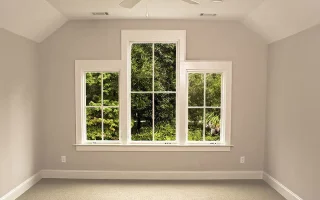In an increasingly interconnected world, concerns about privacy and surveillance have become more prevalent than ever. With the proliferation of hidden cameras and covert recording devices, individuals must remain vigilant to protect their privacy in public and private spaces. With their discreet design and widespread use, LED lights have emerged as a potential location for hidden cameras. In this comprehensive guide, we’ll explore the methods and techniques for detecting hidden cameras in LED lights, empowering you to safeguard your privacy and security.
Understanding the Threat:

Hidden cameras disguised as LED lights pose a significant threat to privacy, as they can be secretly installed in various settings, including homes, offices, hotel rooms, and public spaces. These covert recording devices can capture sensitive information, compromising personal privacy and security. Detecting hidden cameras in LED lights requires a combination of observation, technology, and expertise to uncover these clandestine devices effectively.
Methods for Detecting Hidden Cameras:
- Visual Inspection: The first step in detecting hidden cameras in LED lights is conducting a thorough visual inspection of the surroundings. Look for any irregularities or anomalies in the appearance of the LED lights, such as unusual shapes, sizes, or features that may indicate the presence of a hidden camera. Pay attention to areas where cameras could be concealed, such as behind ventilation grilles, in corners, or within decorative fixtures.
- Use of Detection Devices: Specialized detection devices, such as radio frequency (RF) detectors and infrared (IR) scanners, can aid in the identification of hidden cameras in LED lights. RF detectors can detect the radio signals emitted by wireless cameras, while IR scanners can detect the infrared radiation emitted by hidden cameras with night vision capabilities. These devices can help pinpoint the location of hidden cameras and provide visual or auditory alerts to indicate their presence.
- Scan for Wireless Networks: Hidden cameras with Wi-Fi capabilities may be connected to a wireless network for remote monitoring and control. Use a smartphone, tablet, or computer to scan for available nearby Wi-Fi networks. Look for any unfamiliar or suspicious networks associated with hidden cameras. Additionally, check for devices with MAC addresses that match known camera manufacturers or models.
- Perform a Physical Inspection: In addition to visual inspection, conduct a physical inspection of the LED lights to uncover hidden cameras. Use a flashlight to illuminate hard-to-reach areas, such as recessed lighting fixtures or ceiling-mounted LEDs. Look for wires, lenses, or other components not typical of standard LED lights. Be thoroughly examined, checking the fixtures’ interior and exterior for signs of tampering or modification.
- Utilize Smartphone Apps: Several smartphone apps are available that claim to detect hidden cameras using the device’s camera and sensors. These apps analyze the visual and electromagnetic spectrum to identify hidden cameras nearby. While less reliable than dedicated detection devices, smartphone apps can be an additional tool for detecting hidden cameras in LED lights.
Preventative Measures and Best Practices:
- Be Mindful of Your Surroundings: Remain vigilant and observant of your surroundings, particularly in unfamiliar or private settings where hidden cameras may be more prevalent. Trust your instincts and report suspicious behavior or devices to the appropriate authorities.
- Cover or Disable Unused Cameras: If you suspect the presence of hidden cameras in LED lights, consider covering or turning off the devices to prevent unauthorized surveillance. Use adhesive tape, stickers, or blackout covers to effectively obscure the camera lens or block its field of view.
- Consult Security Professionals: If you have concerns about hidden cameras in LED lights, seek guidance from security professionals or experts in surveillance detection. These professionals can conduct thorough inspections, provide recommendations for countermeasures, and offer peace of mind regarding your privacy and security.
- Regularly Inspect Your Environment: Inspect your home, office, or other spaces for signs of hidden cameras or surveillance devices. Routinely check LED lights, electrical outlets, smoke detectors, and other fixtures where cameras can be concealed to protect your privacy.




